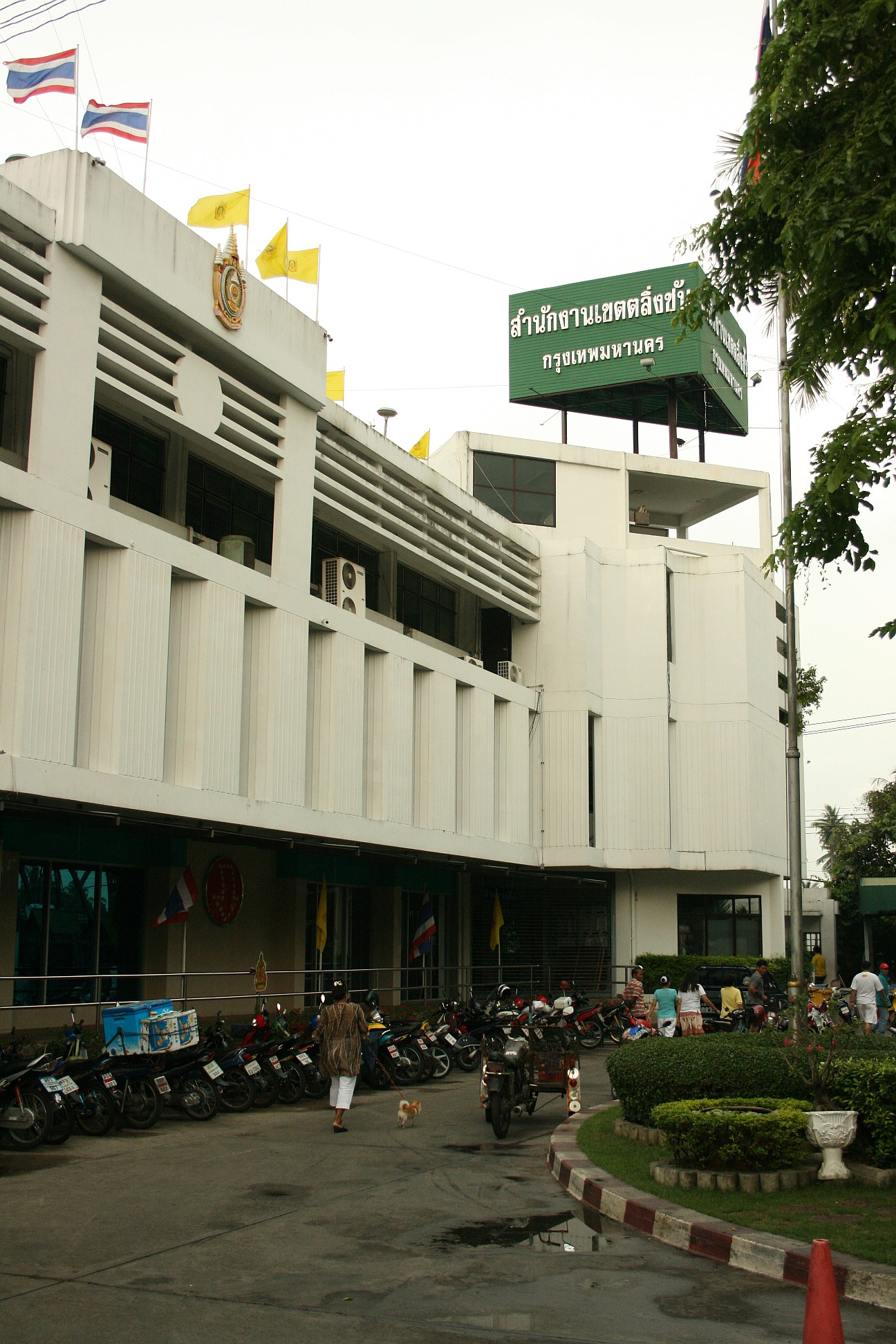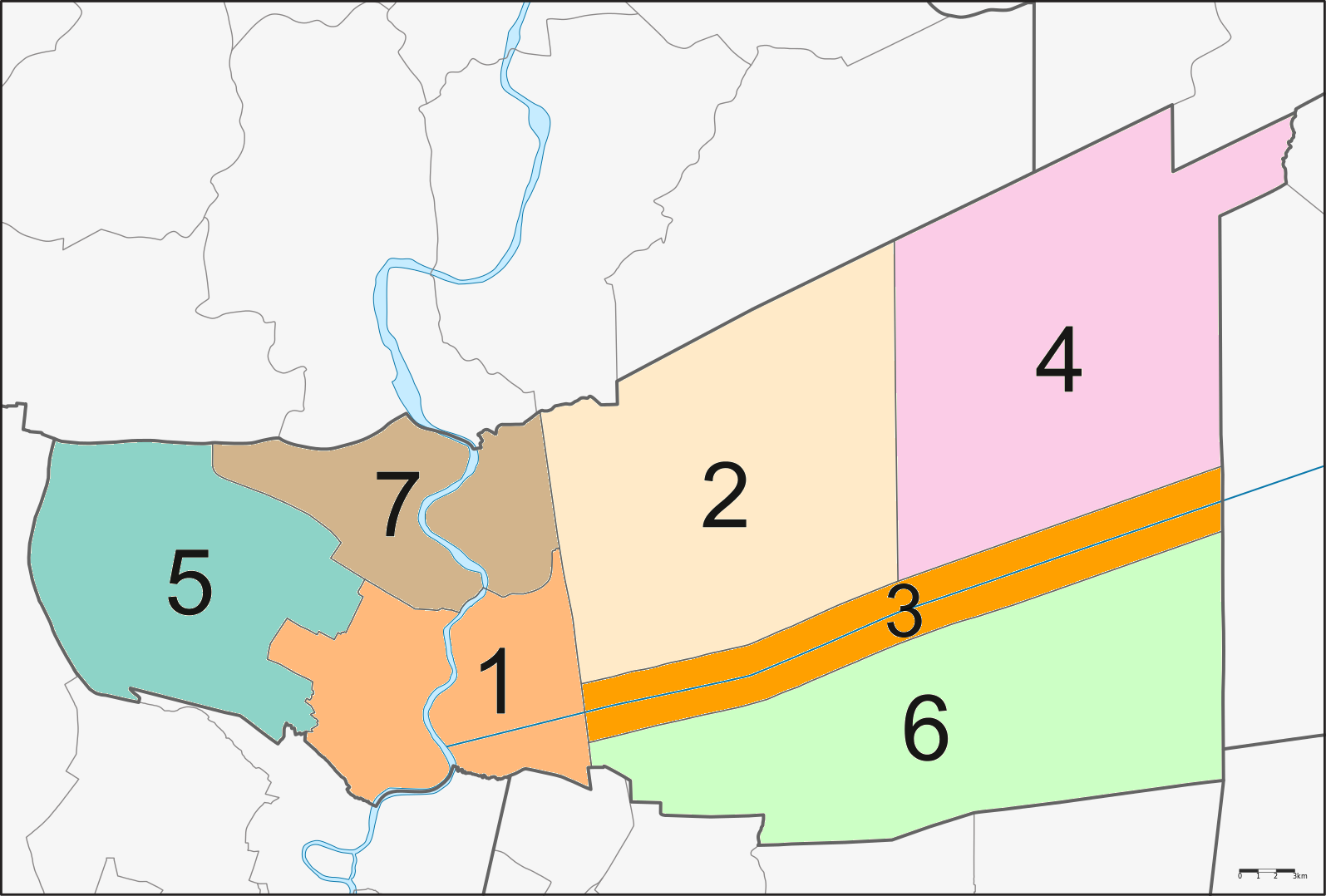|
Kanchanaphisek Road
Kanchanaphisek Road (), also known as the Bangkok Outer Ring Road () is a highway in Thailand, connecting Bangkok, Samut Prakan province, Nonthaburi province, Pathum Thani province and Phra Nakhon Si Ayutthaya province. It consists of multiple sections, including a Controlled-access highways in Thailand, controlled-access toll road, and almost forms a complete loop around the Bangkok Metropolitan Region, Bangkok Metropolitan Area. History Due to the rapid economic development of Bangkok which resulted in a significant increase in road traffic, the Bangkok Outer Ring Road was conceived in 1978 as a bypass route to connect the major highways leading out of the capital city. Its construction was separated into sections due to the high costs involved in the project, with the West section being the first to be constructed, followed by the East section and the South section. The Department of Highways initially designated the highway as Highway 39, but it was changed to Highway 9 after ... [...More Info...] [...Related Items...] OR: [Wikipedia] [Google] [Baidu] |
Bangkok
Bangkok, officially known in Thai language, Thai as Krung Thep Maha Nakhon and colloquially as Krung Thep, is the capital and most populous city of Thailand. The city occupies in the Chao Phraya River delta in central Thailand and has an estimated population of 10 million people as of 2024, 13% of the country's population. Over 17.4 million people (25% of Thailand's population) live within the surrounding Bangkok Metropolitan Region as of the 2021 estimate, making Bangkok a megacity and an extreme primate city, dwarfing Thailand's other urban centres in both size and importance to the national economy. Bangkok traces its roots to a small trading post during the Ayutthaya Kingdom, Ayutthaya era in the 15th century, which eventually grew and became the site of two capital cities, Thonburi Kingdom, Thonburi in 1767 and Rattanakosin Kingdom (1782–1932), Rattanakosin in 1782. Bangkok was at the heart of the modernization of Siam during the late 19th century, as the count ... [...More Info...] [...Related Items...] OR: [Wikipedia] [Google] [Baidu] |
Bang Khun Thian District
Bang Khun Thian (, ) is one of the 50 districts (''khet'') of Bangkok, Thailand. Its neighbors, clockwise from the north, are Bang Bon, Chom Thong, and Thung Khru Districts of Bangkok, Phra Samut Chedi district of Samut Prakan province and Mueang Samut Sakhon district of Samut Sakhon province. Bang Khun Thian is Bangkok's southernmost district, and the only one bordering the Bay of Bangkok (upper Gulf of Thailand). History Bang Khun Thian is an old district, believed to have been established in 1867 as an ''amphoe'' of Thonburi. In 1972, Thonburi and Phra Nakhon Provinces were combined into Bangkok metropolis. Administrative units in the newly combined capital province were renamed from amphoe and tambon to "district" (''khet'') and "sub-district" (''khwaeng''). Thus, Bang Khun Thian became a district of Bangkok, composed of seven sub-districts: Bang Khun Thian, Bang Kho, Chom Thong, Bang Mot, Tha Kham, Bang Bon, and Samae Dam. Due to population increases, a portion of Bang ... [...More Info...] [...Related Items...] OR: [Wikipedia] [Google] [Baidu] |
Suphan Buri Province
Suphan Buri (, ) located in the central region of Thailand, is one of the country's 76 provinces (จังหวัด, changwat), the first-level administrative divisions. Neighbouring provinces are (from north clockwise) Uthai Thani, Chai Nat, Sing Buri, Ang Thong, Phra Nakhon Si Ayutthaya, Nakhon Pathom and Kanchanaburi. As of 2018 the province counted a population of around 848,700, representing about 1.28% of the country's population. Suphan Buri Province has a moderately diverse ethnic population, the majority are of Tai, Mon, Lao, Chinese, and Khmer descent. Toponymy The word ''suphan'' originates from the Sanskrit word ''Suvarna'' (Devanagari: सुवर्ण), meaning 'gold', and the word ''buri'' from Sanskrit ''purī'' (Devanagari: पुरी), meaning 'town' or 'city'. Hence the name of the province literally means 'city of gold'. Geography The terrain of the province is mostly low river plains, with small mountain ranges in the north and the we ... [...More Info...] [...Related Items...] OR: [Wikipedia] [Google] [Baidu] |
Taling Chan District
Taling Chan (, ) is one of the Districts of Bangkok, 50 districts (''khet'') of Bangkok, Thailand. Its neighbours, clockwise from the north, are Bang Kruai district of Nonthaburi province and Bang Phlat district, Bang Phlat, Bangkok Noi district, Bangkok Noi, Bangkok Yai district, Bangkok Yai, Phasi Charoen district, Phasi Charoen, Bang Khae district, Bang Khae, and Thawi Watthana district, Thawi Watthana Districts of Bangkok. History Taling Chan is an old district back when there was Thonburi province. Now Thonburi is merged into Bangkok. In 1998, part of the district was split into a new Thawi Watthana district. Historically, much of the area was used as orchards and kitchen gardens, many remaining there today. It has been called "Bangkok's Kitchen". The landscape of Taling Chan about 1,000 years ago is believed to have been part of the Chao Phraya River delta. The area was a muddy mangrove forest and there was no evidence of human settlement. Two areas of Taling Chan, Bang R ... [...More Info...] [...Related Items...] OR: [Wikipedia] [Google] [Baidu] |
Kanchanaphisek Road In Bang Yai, Nonthaburi
Kanchanaphisek (, from Sanskrit: 'gold' + 'anointment') is the Thai term for 'golden jubilee', used for the celebrations of the Golden Jubilee of Bhumibol Adulyadej in 1996. Structures and places named Kanchanaphisek as part of the celebrations include: * Kanchanaphisek Road, the outer ring road of Bangkok * Kanchanaphisek Bridge, the road's crossing over the Chao Phraya River * Kanchanaphisek National Museum, one of the national museums of Thailand The national museums (, ) of Thailand are operated by the Fine Arts Department of the Ministry of Culture, and are responsible for the safeguarding of state-owned historical and cultural artefacts. In 1926 King Prajadhipok created the Royal Insti ... {{set index article Monuments and memorials to Bhumibol Adulyadej Place name etymologies ... [...More Info...] [...Related Items...] OR: [Wikipedia] [Google] [Baidu] |
Golden Jubilee Of Bhumibol Adulyadej
A golden jubilee marks a 50th anniversary. It variously is applied to people, events, and nations. Bangladesh In Bangladesh, golden jubilee refers the 50th anniversary year of the separation from Pakistan and is called in Bengali ''"সুবর্ণ জয়ন্তী"'' (''Shuborno jayanti''). Vision 2021 was the political manifesto of the Bangladesh Awami League party before winning the National Elections of 2008. It stands as a political vision of Bangladesh for the year 2021, the golden jubilee of the nation. Several celebration programs will be held in countries including India, Russia, Germany, Sweden, Hungary, Poland, Nepal and Bhutan. China * Emperor Wu of Han dynasty (141-87 BCE, Jubilee in 91 BCE) * Kangxi Emperor of Qing dynasty (1661–1722, Jubilee in 1711) * Qianlong Emperor of Qing dynasty (1735–1796, Jubilee in 1785) Korea * Yeongjo of Joseon (1724–1776, Jubilee in 1774) Japan In Japan, golden jubilee refers to the 50th anniversary and is ... [...More Info...] [...Related Items...] OR: [Wikipedia] [Google] [Baidu] |
Bhumibol Adulyadej
Bhumibol Adulyadej (5 December 192713 October 2016), titled Rama IX, was King of Thailand from 1946 until Death and funeral of Bhumibol Adulyadej, his death in 2016. His reign of 70 years and 126 days is the longest of any List of Thai monarchs, Thai monarch, the longest on record of any independent Asian sovereign, and the List of longest-reigning monarchs, third-longest of any sovereign state. Born in the United States, Bhumibol spent his early life in Switzerland, in the aftermath of the 1932 Siamese revolution, which toppled Thailand's centuries-old absolute monarchy, ruled at the time by his uncle, King Prajadhipok (Rama VII). He ascended to the throne in June 1946, succeeding his brother, King Ananda Mahidol (Rama VIII), who had died under mysterious circumstances. In the course of his rule, Bhumibol presided over Thailand's transformation into a major US ally and a regional economic power. Between 1985 and 1994, Thailand was the world's fastest-growing e ... [...More Info...] [...Related Items...] OR: [Wikipedia] [Google] [Baidu] |
Bangkok Metropolitan Region
The Bangkok Metropolitan Region (BMR) (; ; ), may refer to a government-defined "political definition" of the urban region surrounding the metropolis of Bangkok, or the built-up area, i.e., urban agglomeration of Bangkok, Thailand, which varies in size and shape, and gets filled in as development expands. The political definition is defined as the metropolis and the five adjacent provinces of Nakhon Pathom, Pathum Thani, Nonthaburi, Samut Prakan, and Samut Sakhon. Area and population The Bangkok Metropolitan Region (political definition) covers an area of 7,762 km2. Due to the success of the service and tourism industry in Bangkok, the city has gained in popularity for work among provincial Thais from the rural areas and with people from many countries in the Indochina region as well as many South Asian countries. Since around the turn of the century, there has been a large influx of Indians into Thailand (especially Punjabis, Gujaratis, Tamils and Pashtuns), an ... [...More Info...] [...Related Items...] OR: [Wikipedia] [Google] [Baidu] |
Controlled-access Highways In Thailand
Controlled-access highway, Controlled-access highways in Thailand are systems that can be used only by cars, trucks, and certain types of buses, forming a spider-web network around the Bangkok Metropolitan Region, Greater Bangkok area and eventually covering the entire country. Currently, there are three different systems in Thailand. The first system, known as the "Intercity Motorway," is owned and operated by the Department of Highways. The second system is the "Expressway," which is owned by the Expressway Authority of Thailand, Expressway Authority of Thailand (EXAT) and operated by the Bangkok Expressway and Metro, Bangkok Expressway and Metro Public Company (BEM), with some expressway routes directly operated by the Expressway Authority of Thailand, EXAT itself. The third system is the "Concession Highway," commonly known as the "Tollway," which is owned by the Department of Highways but operated by a private company. The Tollway currently has one route, the Don Mueang Tollway, ... [...More Info...] [...Related Items...] OR: [Wikipedia] [Google] [Baidu] |
Pathum Thani Province
Pathum Thani (, ) is one of the central provinces (''changwat'') of Thailand. Neighboring provinces are (from north clockwise): Phra Nakhon Si Ayutthaya, Saraburi, Nakhon Nayok, Chachoengsao, Bangkok, and Nonthaburi. The province is north of Bangkok and is part of the Bangkok metropolitan area. In many places, the boundary between the two provinces is not noticeable as both sides of the boundary are equally urbanized. Pathum Thani town is the administrative seat, but Ban Rangsit, seat of Thanyaburi district, is the largest populated place in the province. Pathum Thani is an old province, heavily populated by the Mon people, dotted with 186 temples and parks. The Dream World amusement park is here. Geography The province lies on the low alluvial flats of the Chao Phraya River that flows through the capital. Many canals (''khlongs'') cross the province and feed the rice paddies. There is no forest area in the province. History The city dates back to a settlement founded by ... [...More Info...] [...Related Items...] OR: [Wikipedia] [Google] [Baidu] |




